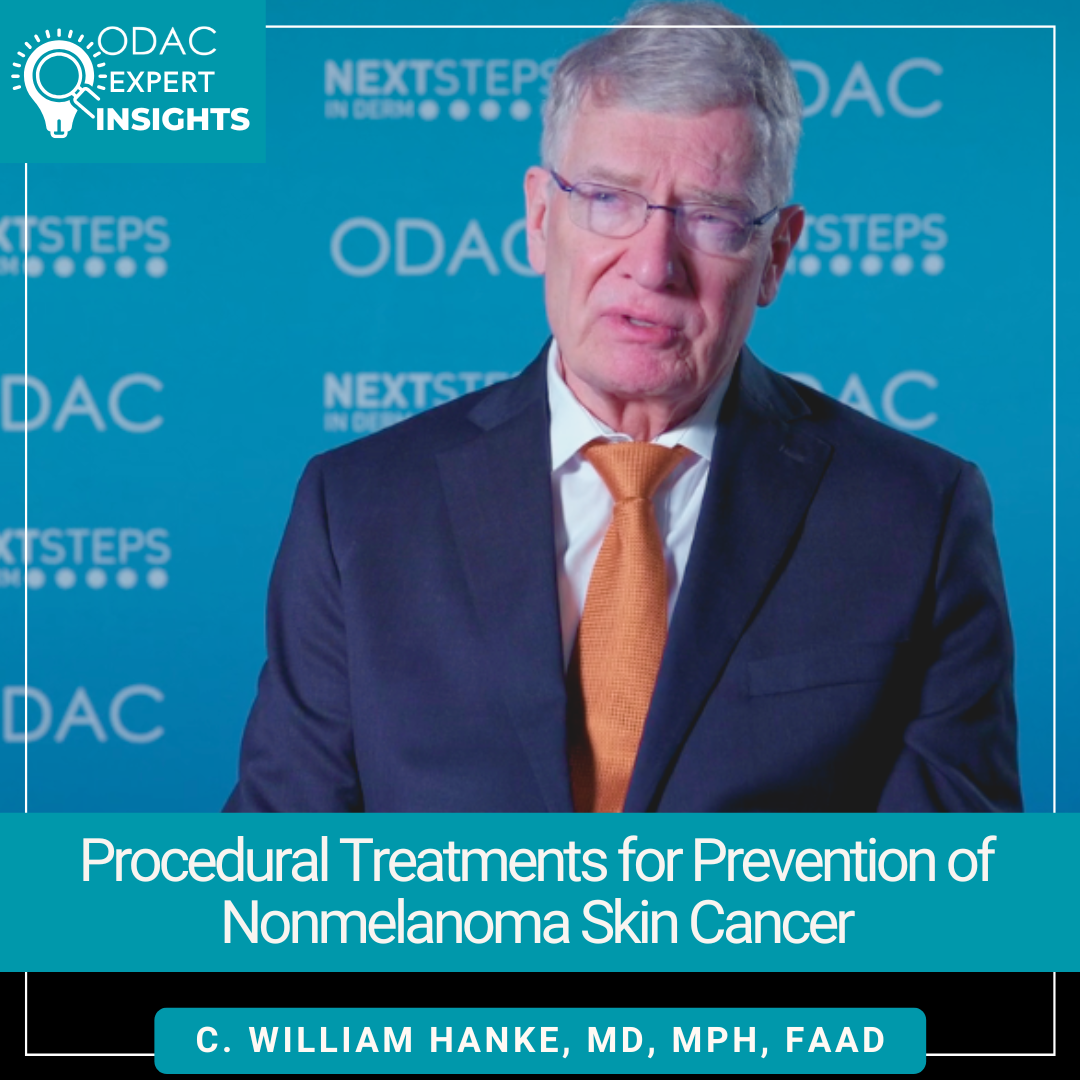Since skin cancer is a global epidemic, Dr. C. William Hanke, a dermatologic surgeon in Indianapolis, says it’s time to start tapping into the procedural tool box to focus on prevention. Next Steps in Derm, in partnership with the ODAC Dermatology Conference, interviewed Dr. Hanke, who outlines therapies to reverse sun damage that vary in their aggressiveness. Watch as Dr. Hanke shares which patients should be considered for preventative treatment. Plus learn one question that can help you determine the best treatment for each patient.
Further Reading
If you want to read more about preventing nonmelanoma skin cancer, check out the following articles published in the Journal of Drugs in Dermatology:
Fractional Laser for Prevention of Non-melanoma Skin Cancer
ABSTRACT
Non-melanoma skin cancer (NMSC) causes significant patient morbidity and healthcare costs; therefore, there is a vested interest in expanding the prevention armamentarium available for high risk patients.
Fractional lasers (FLs) are used to manage various dermatologic conditions including photoaging, scarring, and dyspigmentation, and are currently being studied in the context of NMSC prevention due to their ability to modulate epidermal turnover and signaling molecules crucial for the skin’s protective response against UV. Herein, the mechanistic theory and evidence for use of FLs for NMSC prevention will be reviewed.
ABSTRACT
Background: The incidence of keratinocyte carcinomas (KCs), comprising basal and squamous cell carcinomas, is rising in the United States. Chemoprevention is one modality by which patients can reduce the incidence of KCs.
Methods: We performed a retrospective review of 327 patients who employed a combination of imiquimod 5% cream, 5-fluorouracil 2% solution, and tretinoin 0.1% cream in a field therapy regimen over the face/ears or scalp for chemoprevention.
Results: Patients had dramatically lower odds of having KCs in the treatment location (face/ears or scalp) in the one-year period after field treatment than in the one-year period preceding field treatment (OR=0.06, 95% CI: [0.02, 0.15]). Patients were also at lower odds of having KCs in non-treated areas the year after field treatment than in the year preceding it (OR=0.25, 95% CI: [0.14, 0.42]). Additionally, fewer cryotherapy sessions were performed for actinic keratoses in the treatment areas in the year after treatment (mean=1.5, SD=1.21) than the year preceding treatment (mean=2.3, SD=0.99; t=11.68, P<0.001).
Conclusions: A combination of imiquimod 5% cream, 5-fluorouracil 2% solution, and tretinoin 0.1% cream were effective at reducing the incidence of new KCs for at least one year. Individualized treatment application frequency allowed for increased patient adherence. Prospective studies evaluating combination topical treatments for chemoprevention of KCs are needed to further assess the treatment effects found in this study.
Did you enjoy this video interview? Find more here.

